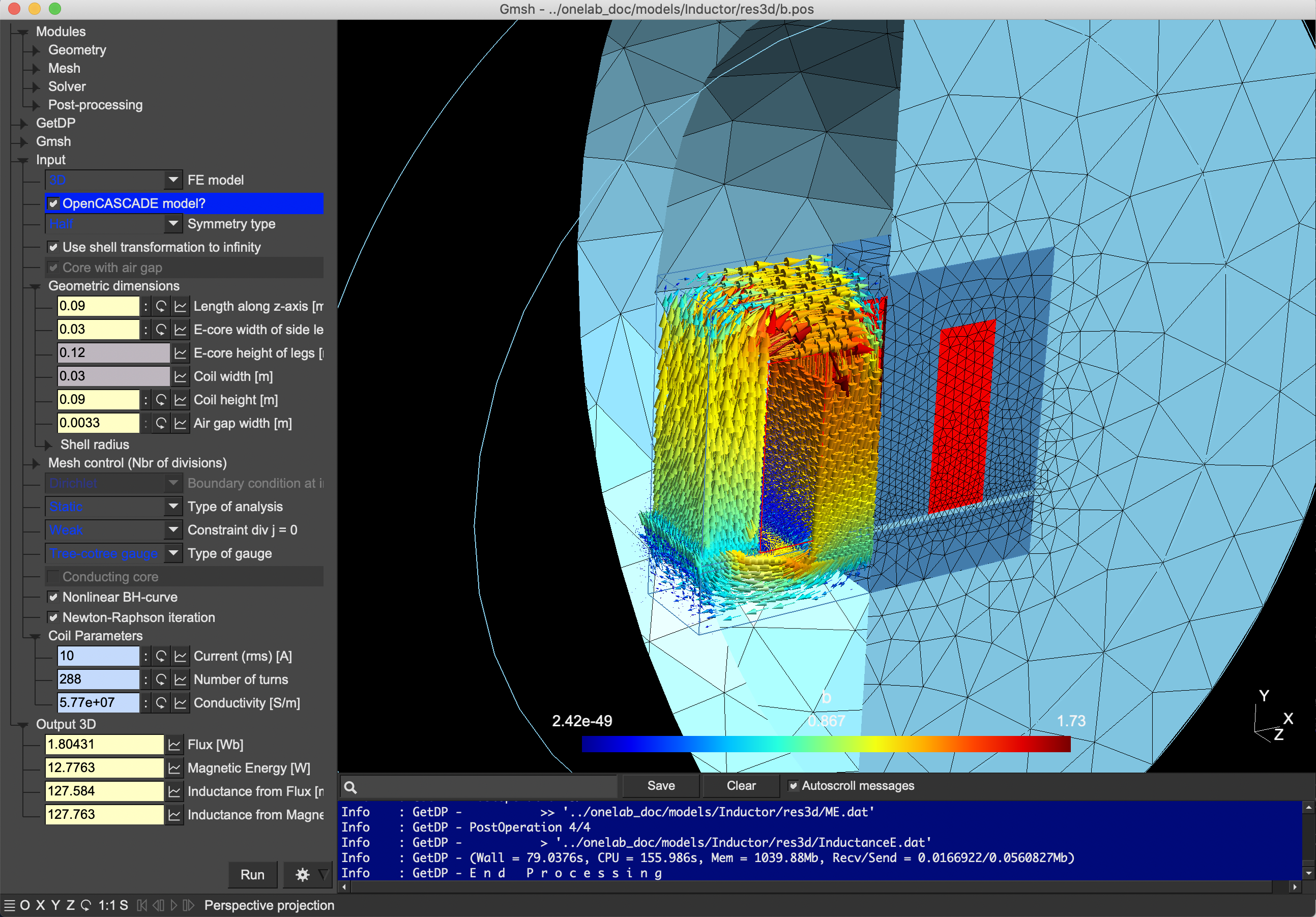

Info : Meshing surface 1 (Surface, Frontal) The console log shows: Info : Meshing 1D. geo file into gmsh gui (v 4.3.0) and run mesh 1D then 2D (Frontal-Delaunay option) and finally 2D recombination (Blossom option) commands the resulting surface mesh is not that regular: geo file simplifies the type of intended use case: lc = 0.1
GMSH MESH WIDTH CODE
įor the specific example I posted above, the necessary code (in the format of a. Please see my original post on the GitLab page of gmsh for further info. The latest version of gmsh (version 4.9.3, released 4 January 2022) includes a new type of "Field" option called "Extend".Īn example of this new Field is shown here. stl files, or more generically, multiple volumes with distinct surfaces. To those interested, there is a quick way to achieve a gradient mesh with one or multiple.


Thank you in advance for your help and please let me know if I can further clarify my problem. stl boundary? Or perhaps specify a maximum element size BUT include something to break larger but strongly distorted elements into smaller elements of higher quality? Is there a way to specify mesh size as a function of distance from. but this quickly gets complicated because some grains can be concave and have quite complex morphology, so I don't think it is feasible to do this using a "Threshold" field.īelow are measures of element quality from gmsh: The "Threshold" field as demonstrated in t10.geo requires a point at which the finer mesh should be specified, so theoretically this could work because I can specify the center of each grain. stl files and 2) specify a gradually larger mesh size farther from the boundaries of the. Ideally, I would be able to 1) keep the fine triangle faces and small tetrahedral elements at the boundary of the. stl file contain one small triangle face but are elongated towards the interior of the grain to meet the desired element size as specified above, which reduces their quality. This greatly reduces the total number of elements which is great, but the problem is that tetrahedral elements at the boundary of the. Here (from my understanding), the "background" element size is specified as 10. In the other, I specify a "background" mesh size using the additional two lines below and end with 84,322 tetrahedral elements: Mesh.CharacteristicLengthExtendFromBoundary = 0 In one of these, I do not specify mesh size and end with 398,426 tetrahedral elements. stl file for a representative grain in my microstructure model and the. stl file since these triangles are in contact with other grains that must be similarly meshed. stl files in DREAM.3D):Ī major constraint is that I cannot alter the triangles at the boundaries of the. Aside from the thin annealing twins, the other grains in the model are spherical as shown here (note: this is before the voxelated mesh is converted to. Therefore it would be ideal to create meshes where the element size gradually increases toward the center of the grains. However, to create models with reasonable run times, the total number of elements cannot be excessively large. These models contain annealing twins that are very thin "pancake" shaped grains and require small tetrahedral elements to be represented adequately. However, I need to create models with a mesh size gradient without reducing the quality of the tetrahedral elements. This works well and I have previously used the "Threshold" field as explained in tutorial "t10.geo" to control the mesh size locally. stl files that are then meshed using gmsh. I am creating polycrystalline microstructures for crystal plasticity FEM simulations.


 0 kommentar(er)
0 kommentar(er)
